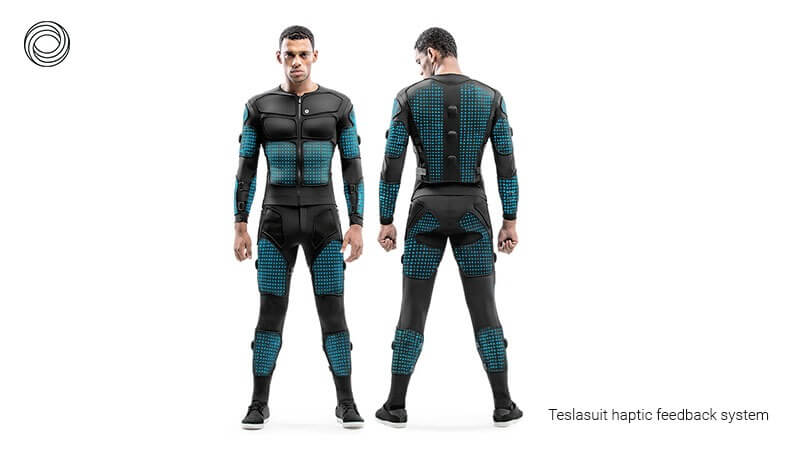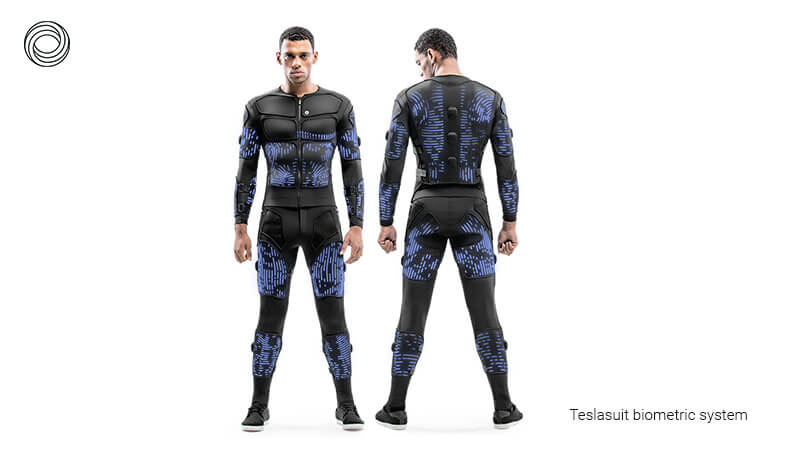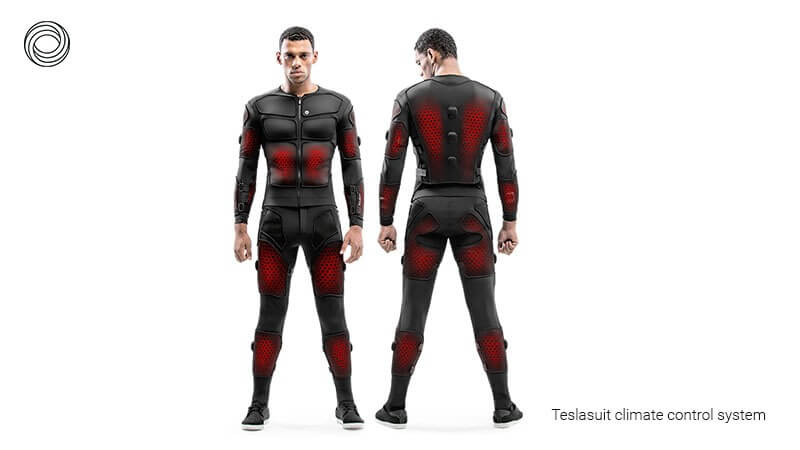Why is training in the enterprise sector a major business process?
According to a study by Go2HR, “40% of employees who receive poor enterprise training leave their positions within the first year”. That is, personnel is forced to move due to the lack of skills training and development. That’s why companies are experiencing a shortage of skilled employees that are engaged in long-term labor relations. Thus, high turnover is becoming a limiting factor in the operations of many companies.
It has the following negative consequences:
- productivity slips;
- sales decline;
- current staff is required to work more hours;
- motivation is weakening.
On the contrary, corporate training is bearing fruit in the form of reduced turnover, cost cutout for replacement of personnel, performance increase, staff loyalty, additional value as a part of the career ladder.
What is the level of enterprise training expenditures?
Figures vary from business to business and depending on the size of the company, but it can cost as much as $2,500, according to the position, to replace a frontline employee. Such an estimation is provided by Go2HR.
Therefore, it’s clear that thorough and effective enterprise training is needed for company success. For example, according to Spherion, 45% of companies say they have increased their investment in training and development programs over the last two years.
According to a 2017 Training Industry Report by Training magazine, the total 2017 U.S. training expenditures — including payroll and spending on external products and services — rose significantly, increasing from 32.5 percent to $90.6 billion.
Other training expenditures (i.e., travel, facilities, equipment) increased to $44.5 billion from $26.1 billion. Meantime, training payroll increased by 12.4 % to $41.6 billion.
Such expenditures can include travel, training facilities, in-house training development, and equipment. Training magazine also indicated that on average, organizations spent 11 percent of their budget or $135,837 (2017) on learning tools and technologies. In numbers, this translates to $1,075 per learner in 2017. This figure has increased in comparison with 2016 ($814).
Manufacturers spent the most per learner in 2017, in particular, $1217. Service organizations spent a little bit less, $1157.

Small size companies are forced to outlay for enterprise training much more than midsize and large organizations, while larger companies continue to operate on an economy of scale.

What do companies expect from training?
Certainly, realizing the goals that can be achieved through corporate training is also extremely important.
According to the 2017 Training Industry Report, the effectiveness of training programs is the most expected by the companies (37%) that adopt training programmes. Furthermore, 16% of businesses seek to measure the impact of training programs. For the 13% of companies, training is one of the main tools to reduce costs and improve efficiency. Slightly more than ten percent (12%) implement training to increase learner usage of the programs. And finally, a minority of firms (4%) estimate learning infrastructure and obtaining revenue through external training as the most significant aspect of building skills.

What are the benefits of comprehensive enterprise training programs?
It is clear that many positive effects of across-the-board training programs are difficult to calculate, but there are also those that are easily quantified. Improved job satisfaction and morale among employees, increased motivation, strengthened company image and increased innovation in strategies and products are among the first group of parameters. The second group includes increased efficiencies in processes, resulting in a financial gain, increased capacity to adopt new technologies and methods and, what counts most, reduced employee turnover.
Here are the results of an interview conducted by ASTD Training Survey that covered 2500 companies. It turned out that comprehensive training programs give these average results:
- 218% higher revenue per employee;
- 24% higher profit margins;
- 6% higher shareholder returns.

TESLASUIT is cybernetic second skin platform for enterprise training
As a haptic-based platform, TESLASUIT provides for improved learning along with 360-degree awareness. High-fidelity motion tracking helps to improve movement accuracy by haptic guidance and error augmentation. In addition, the suit models the emotional state of a trainee in the result of the assessment of physiological and behavioral indicators. In addition, climate control makes the training experience more realistic in case of simulation of temperature conditions or more comfortable if the environment is too harsh.
Motion capture allows the user to determine a movement’s deviation from the standard, bringing training closer to the expert level
To implement the full two-way communication between the user and enterprise training environment TESLASUIT uses an embedded proprietary motion capture system. That’s why the full body TESLASUIT motion capture system adds a trainee maximum degree of immersion, especially in non-sitting simulation training. In particular, the mocap system consists of 11 modules, each of them is equipped with MEM’s motion sensors.
The MEM’s motion sensors transfer the position of the joint angles of the limbs. The data obtained from them are sent to the slave microcontrollers. After the main microcontroller reads all the data from them, processed data are transferred wirelessly to a computer, tablet or smartphone device.
TESLASUIT’s full body motion capture system tracks movements and displays them in 3D. A digital visual representation (avatar) of the trainee is created, providing an additional degree of personalization.
The transmission of live data during enterprise training in smart clothing allows trainees and coaches to track the state and level of performance, analyze its effectiveness, and compare it with the standard.
The mocap brings lessons of ordinary users closer to the professional level.

Haptic feedback activates passive haptic learning and contributes to pain and stress relief
Electrical muscle stimulation to perfect the motor learning process
Most people, both amateurs and professionals, are used to moving in their own style, and it is always more difficult to retrain than to learn new things. EMS revolutionizes this process by helping the trainees to intuitively adjust the movements.
EMS is an effective tool for motor learning of complex, repetitive movements. Electrical muscle stimulation with force sensing resistors analyzes the user’s movement patterns and in case of the wrong angle provides real-time feedback via EMS.
To simplify, every time a movement is made incorrectly during training, the corresponding part of the body receives a tactile response. Thus, muscle memory and motor learning are activated and outperforms. It works on the principle of memorizing the motor task by repetition. Just in the TESLASUIT’s case, incomparably fewer repetitions are needed. Ultimately, the exercise is adapted into the long-term muscle memory, which subsequently allows it to be performed without a conscious effort. Such principle of training received the name “passive haptic learning” (PHL) within the scientific community.

TENS for pain and stress relief
Transcutaneous electrical nerve stimulation affects both nerve-point and reflexively to the active points of acupuncture, providing a curative effect on the organs. TENS allows for achieving a pronounced and rapid analgesic effect.
Stimulation of biologically active points causes the release of endorphins, which are chemical substances that block pain. As a result, the pain passes, and the flow of blood and oxygen into the stimulated area increases. These processes cause muscle relaxation and promote healing.
In addition to releasing pain, TENS restores balance to the body, gradually relieving the stress and muscle strain that prevent the organism from functioning normally and depress the immune system.
TENS therapy involves points of the body that mobilizing the body’s ability to self-restore and resistance stressors of various origins.
How does it work?
During voluntary training, the nervous system transmits electrical signals from the brain to muscles, increasing the force that muscles can produce.
By dint of mild pulses of electrical current electrical stimulation affects the nerves or nerve endings that in their turn innervate muscles beneath the skin. ES is applied superficially on the skin (transcutaneously). This technology is called Transcutaneous Electrical Neural Stimulation). EMS (Electrical Muscle Stimulation) means that electrical pulses are transmitted directly into a muscle or a group of muscles to enhance their function.
Going into further detail, the peripheral nerve is stimulated, which causes the excitation impulse that is transferred along the nerve to the motor endplates in the muscle, producing a muscle contraction.
TESLASUIT biometric system analyzes the performance and regulates the load during training
TESLASUIT biometric data can be divided into 2 main types: physiological and behavioral (behaviometrics). The former category is related to the body, and the latter is connected with behavioral patterns.
TESLASUIT is particularly apt for tracking individual indicators of physical state. Invisible sensors built into the suit allow trainees to maintain comfortable control over their performance and health. In addition, feedback from the data analytics provides employees in hazardous work environments with a health forecast and helps them to avoid injuries.
Electrocardiography (ECG)
Electrocardiography is the process of recording the electrical activity of the heart during a certain period of time by means of electrodes placed on the skin.
TESLASUIT with electrodes tracks the worker’s heart rate and view real-time ECG with great precision. In so doing, most normal ECG is filtered out, and the ECG abnormalities are more analyzed in the cloud.

Galvanic skin response (GSR)
Galvanic skin response is one of the most representative characteristics of emotional arousal. It’s related to the electrodermal activity (EDA) and skin conductance (SC). Actually, GSR covers the changes of electrical characteristics of the skin.
TESLASUIT GSR provides an indication of the emotional state that has visual expression and can be quantified. Thus, GSR gives a strong signal of not only physiological but also the psychological processes of the trainee.
And in this, TESLASUIT GSR gives really impressive results in combination with other types of biometric data: ECG, EEG, EMG, etc. Such an integrated approach allows the user to reflect on the data to observe their emotional behavior during the training.
Electromyography (EMG)
Electromyography is a method for studying bioelectrical potentials that arise in skeletal muscles with the excitation of muscle fibers. Also, EMG refers to the registration of electrical muscle activity.
TESLASUIT EMG functions with the help of cutaneous electrodes. The data reflects the process of excitation of the muscle as a whole.
The measured EMG signals cover various types of data regarding the nerve system, e. g., muscle fatigue, muscle movement, and development of motor skills.
EMG data showed the motion recognition performance in 95% of cases.
In addition, EMG may improve training especially detecting errors as a result of wrong muscle tension.
Skin temperature
There is a correlation between an increase in the skin temperature and muscle activation. The temperature rises in the areas next to the muscles involved in the motor activity. It’s a consequence of increased metabolism of training muscles.
Measuring radiation
Detecting and measuring ionizing radiation is enabled with the Geiger counter. Such a measurement will help to prevent adverse health effects of radiation exposure in hazardous work conditions.
TESLASUIT climate control provides comfortable temperature regulation and simulates extreme temperature conditions
With frequent and rapid changes in temperature, the body suffers from stress. Too low or too high temperatures adversely affect the well-being and health of a human.
High external temperature
High external temperature is a specific stress factor that, after a brief increase in the excitatory process, causes inhibition of the cerebral cortex, an imbalance between excitation and inhibition, a weakening of the inhibitory process itself, a violation of motor acts, discoordination, etc.
The illustrative example is the work of a fire-fighter. The intense physical work associated with heat generation in the body, with a high ambient temperature in the fire, combined with significant air humidity puts the fireman’s body in extremely difficult conditions. Most often this microclimate is created when fire extinguishing in cellars, underground galleries, gas and cable communications settings.
During work in these conditions, the state of health of the individual worsens. The following symptoms appear: a headache, dizziness, a beating at the temples, a feeling of heat and stuffiness, weakness, reluctance to move, body temperature rises, etc.
Low external temperature
Too much temperature reduction can lead to excessive supercooling. When the body is overcooled, the functional activity of human organs and the rate of biochemical processes decreases. Even with a short-term effect of cold on the body, the regulatory and homeostatic systems are restructured, the immune status of the body changes.
Cooling, both general and local (especially of hands), contributes to a change in the individual’s motor reaction, disrupting coordination and the ability to perform precise operations, causing inhibitory processes in the cerebral cortex, which can result in further injury.
Attention is diminished, mental activity is inhibited, and activity and efficiency decrease.
TESLASUIT climate control
TESLASUIT climate control is a combination of sweat expulsion system, comfortable temperature maintenance and temperature simulations in emergencies and at the workplace.
TESLASUIT is equipped with thermal sensors all over the body that allow for monitoring and controlling the clothing’s internal temperature from low to high temperatures, depending on the situation and needs. With this critical feature, the TESLASUIT can provide the user with the most comfortable conditions or a wide range of temperature.

TESLASUIT climate control system can neutralize the high temperature as a stress factor providing more comfort for operations in extreme conditions. Alternatively, settings within the suit allow for imitating close to extreme, but still permissible temperature.
TESLASUIT climate control is based on thermoelectric technology with embedded Peltier elements.
Peltier elements have the following advantages:
- maintain the necessary temperature when a higher or lower temperature is required;
- make no noise;
- operational at a wide range of temperatures;
- have a small size and may be implemented into diminutive devices.
It’s a smart, heat exchange technology to create instant coolness or warmth when needed while guaranteeing long-lasting comfort. Cool tones improve and accelerate thermal energy exchange between the body and the textile, where the redundant heat is then dissipated to instantly reduce the wearer’s temperature.
